This giant steel kraken was purposely sunk with an old WW2 ship, to create an artificial coral reef
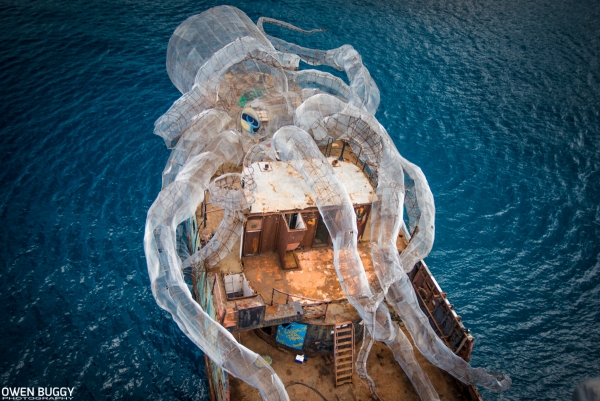
The project, titled BVI Art Reef, is located near the British Virgin Islands
The project, titled BVI Art Reef, is located near the British Virgin Islands
A historical World War II ship is called to solve marine health problems, after being converted into an artificial reef and art canvas. Last April, the ‘Kodiak Queen’ was purposefully sunk into the Caribbean Sea near the British Virgin Islands (BVI), carrying a 25m-long steel kraken on top of it, whose porous surface is considered ideal for the creation of a new coral system. Meanwhile, this underwater art gallery is expected to also serve as a cutting-edge education center for marine researchers, as well as a ‘must see’ spot for divers from around the world, that will benefit the local economy and community. The project, titled BVI Art Reef, will offer ocean rehabilitation as well, providing optimal feeding grounds and hiding spaces for the heavily over-fished Goliath Grouper and other marine life populations.
“It’s envisioned that within just a short space of time the ship and artwork will attract a myriad of sea creatures,†said Clive Petrovic, consultant on the environmental impact of the BVI Art Reef. “Everything from corals to sea sponges, sharks and turtles will live on, in, and around the wreck. The ship will become valuable for future research by scientists and local students alike.â€
The story behind the project
In early 2015, historian Mike Cochran discovered the Navy vessel rusting in a junk yard with wrecked ships and ferries on the island of Tortola, BVI. The ‘Kodiak Queen’, launched in 1940 as U.S. Navy fuel barge YO-44, is suspected to be one of only 5 ships who survived Pearl Harbor. He set up a website in an effort to rescue the ship, and got some famous attention. Among others, the British photographer Owen Buggy saw the site and suggested the ship as an artificial reef. With the help of his friend and former boss Sir Richard Branson, the project soon began. The non-profit Unite B.V.I, the artist group Secret Samurai Productions, the social justice entrepreneurial group Maverick1000, and the ocean education nonprofit Beneath the Waves, also collaborated on this restorative art installation.
To sink the massive ship, the project sought the help of the Commercial Dive Services who safely submerged the vessel off the coast of the Virgin Gorda island. It was the first time the ship had been in the water for nearly 17 years, and was lead to its final resting place by a bevy of boats and helicopters. The construction and sinking of the kraken and the vessel was filmed by filmmaker Rob Sorrenti. While the full-length documentary is currently in post-production, estimated to be released early next year, you can watch a representative clip below:
Source: Colossal
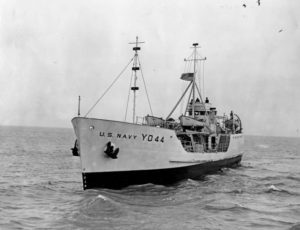
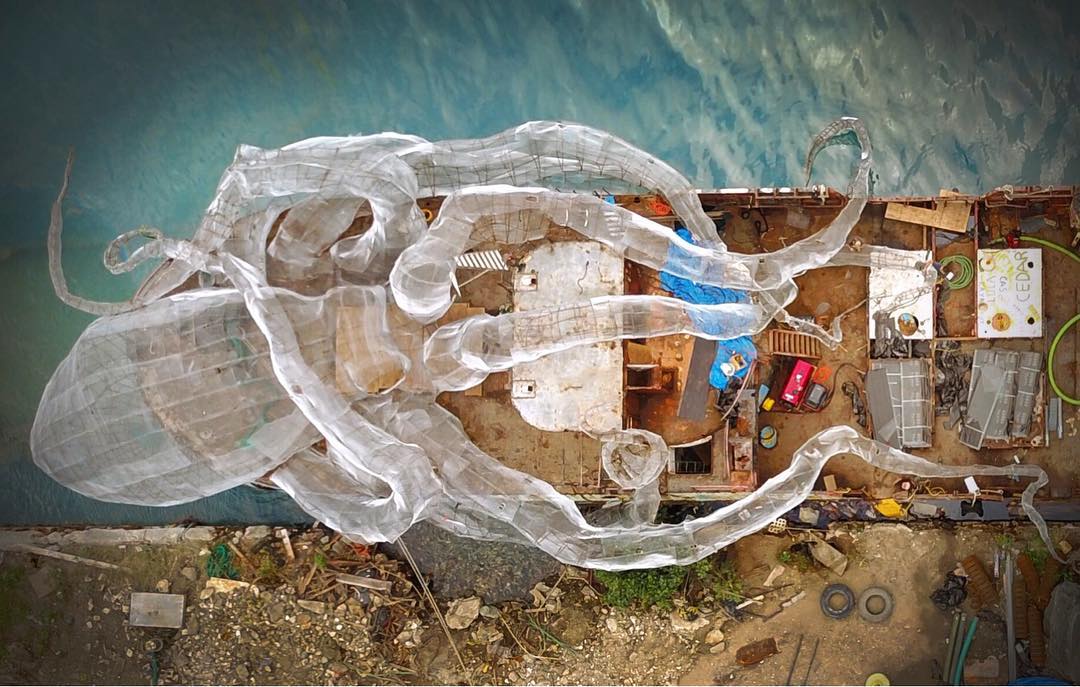
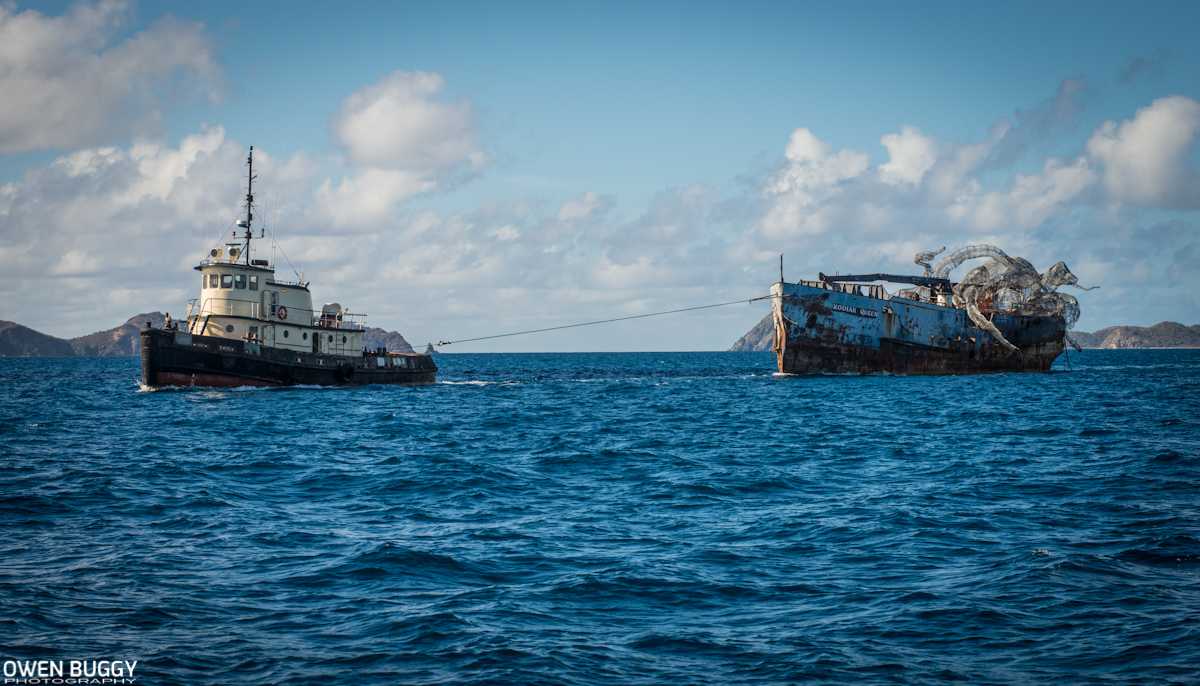
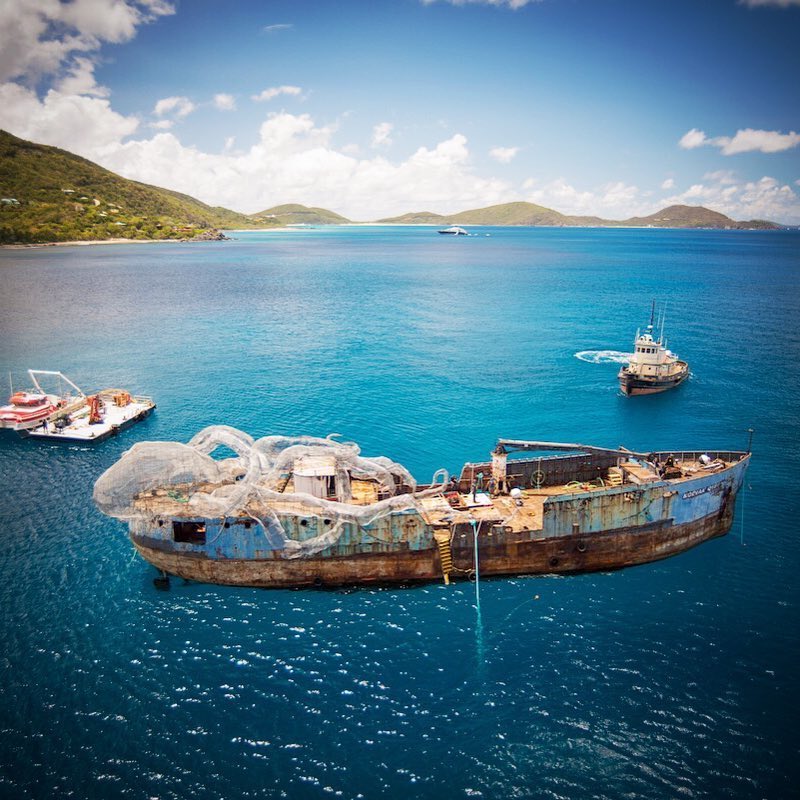
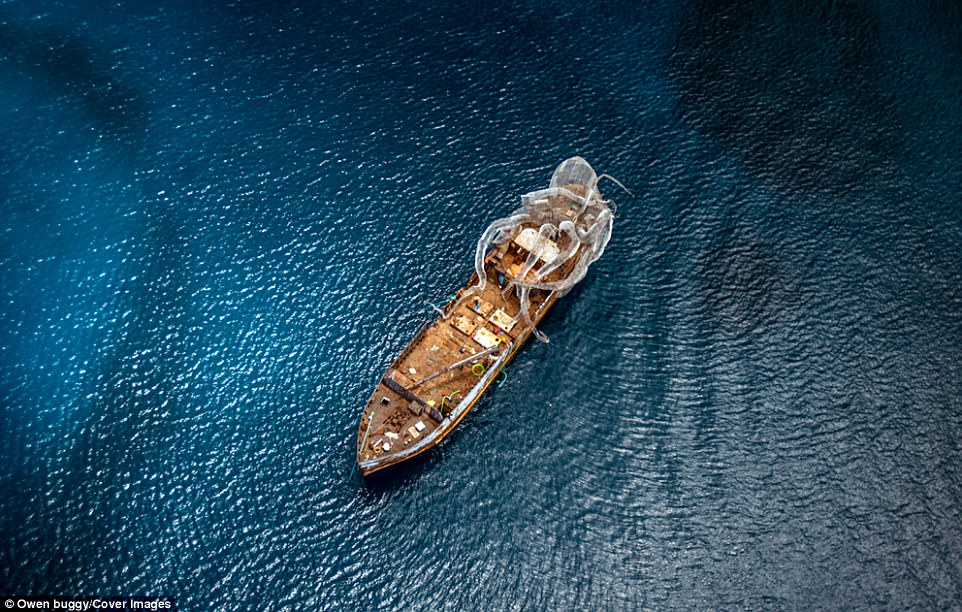
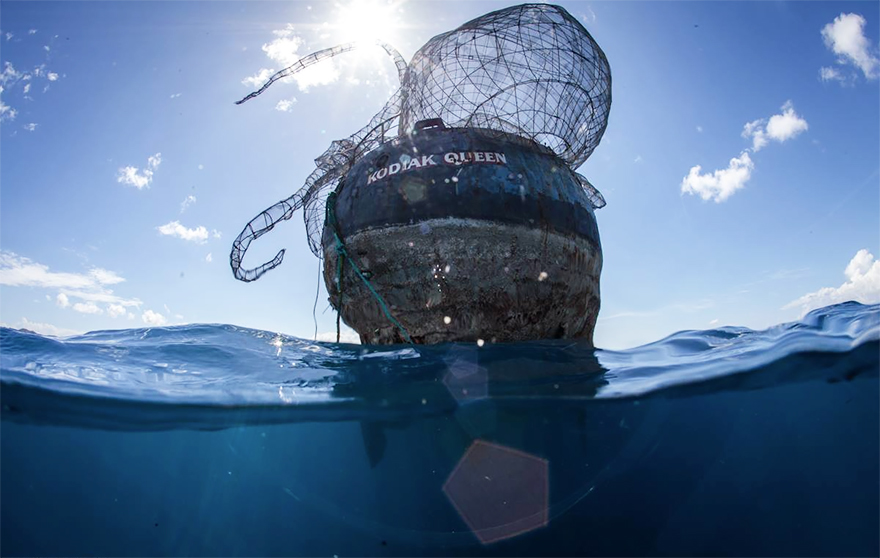
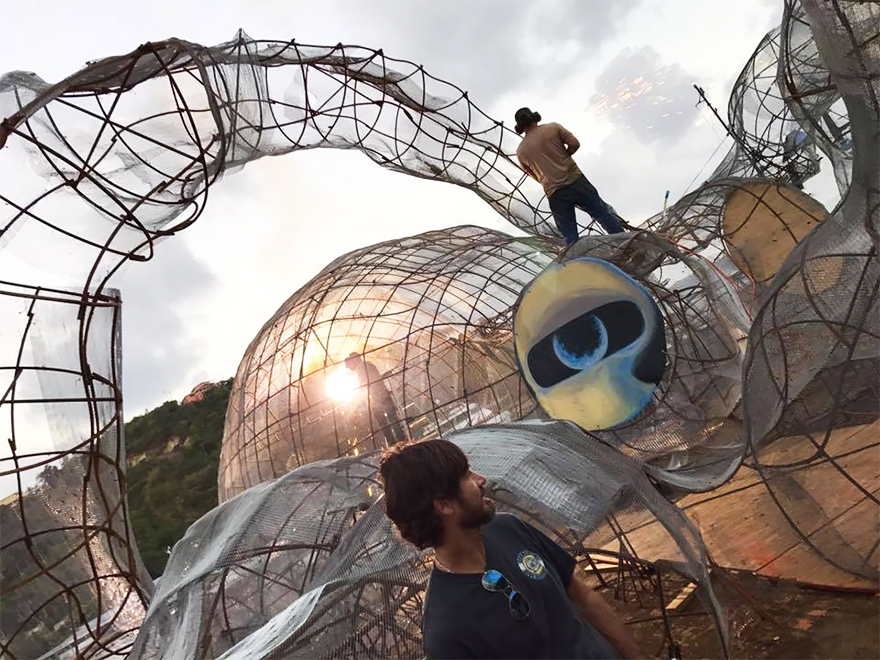
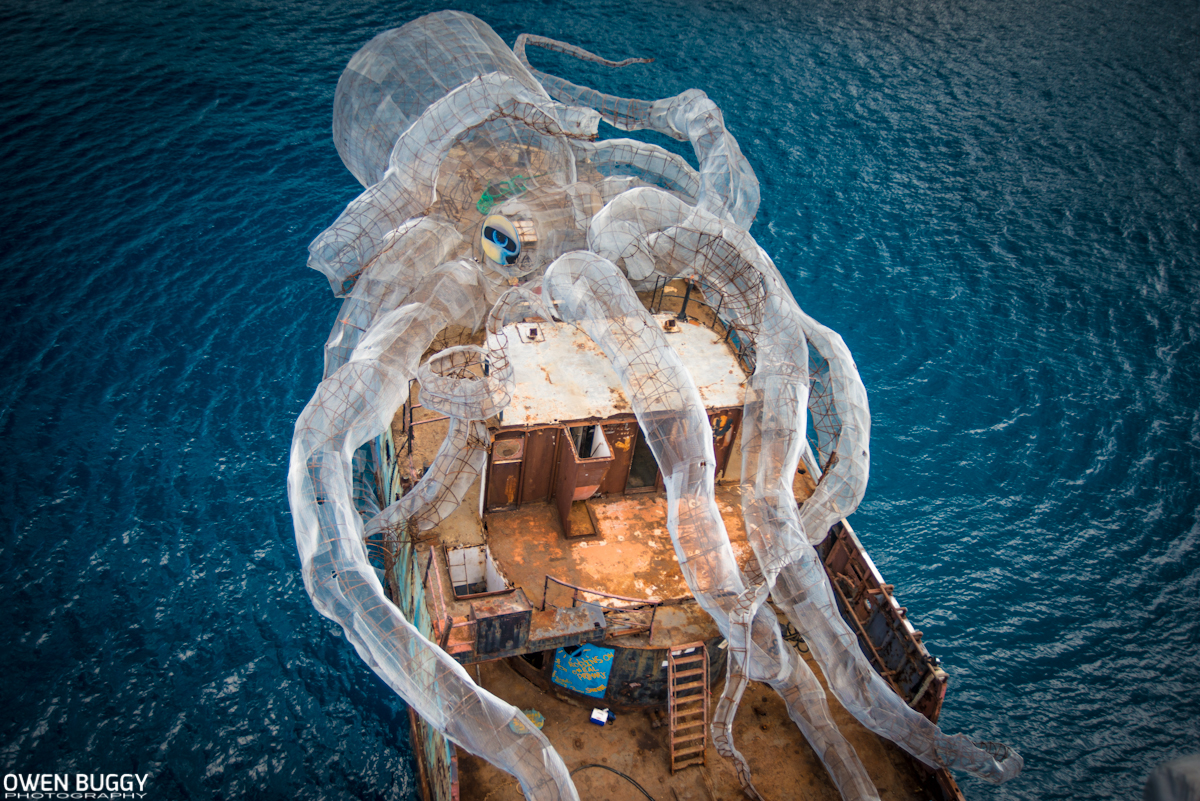
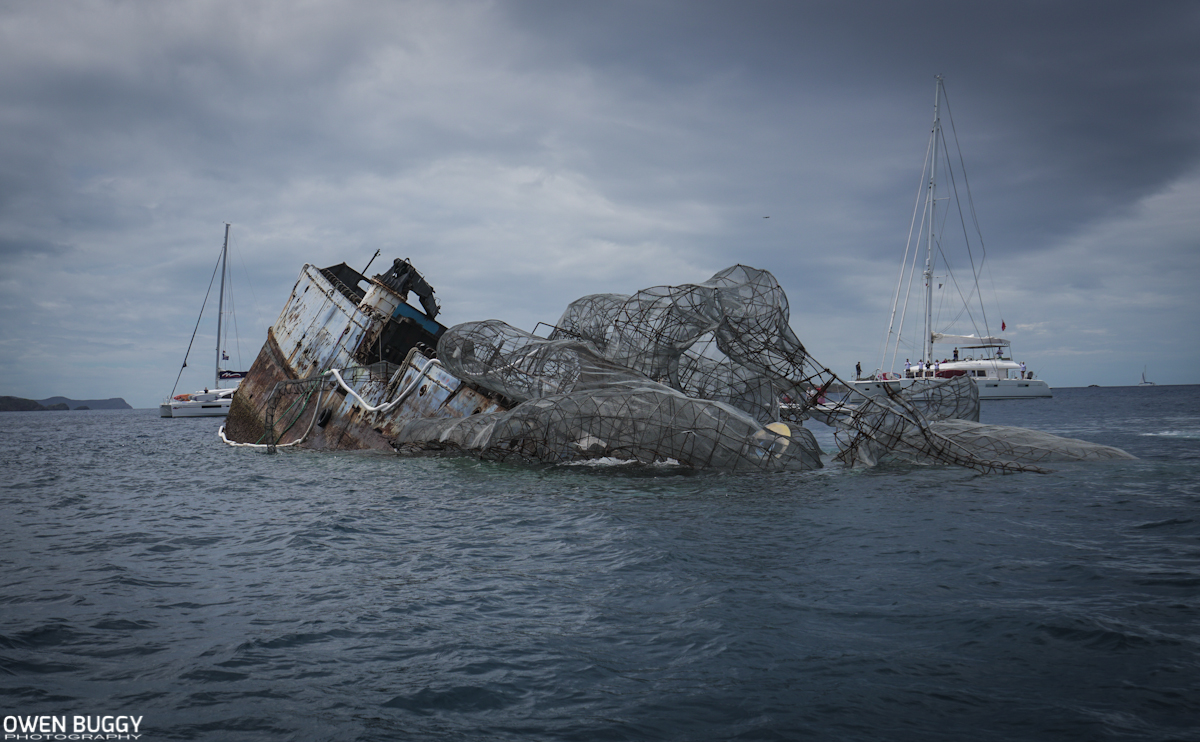
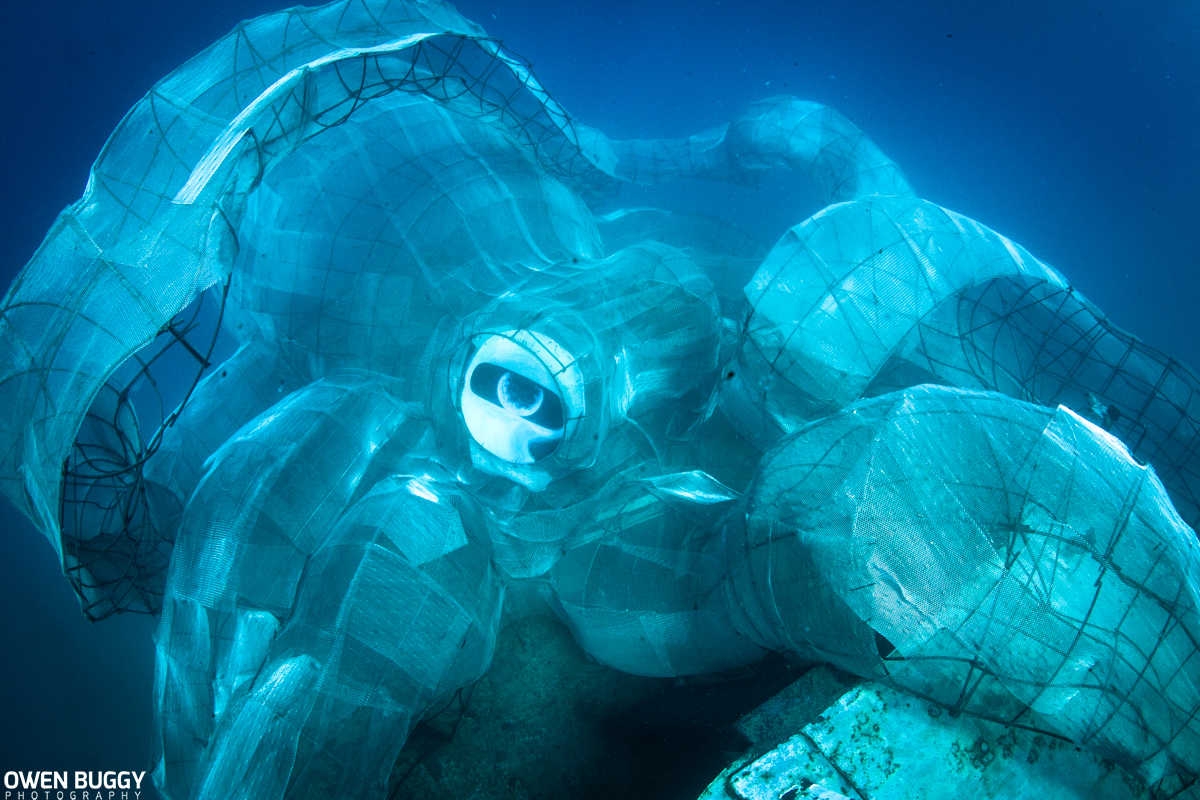
Source: Colossal
Want to read more like this story?

World's First Electric Zero-Emissions Cargo Ship has set sail
Dec, 21, 2017 | NewsThe vessel can travel 50 miles at a top speed of 8 miles per hour on a single charge The vessel can...
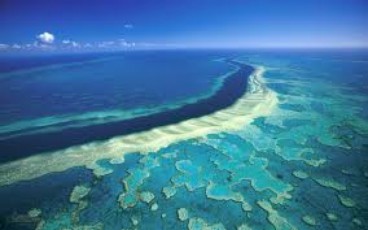
Australia’s Great Barrier Reef is about to die
Dec, 21, 2016 | NewsThe world’s largest coral reef is threatened by climate change The world’s largest co...

Norway’s Historic Ship Tunnel Set to Begin Construction in 2026
Mar, 12, 2025 | NewsThe Norwegian Coastal Administration is making history with the Stad Ship Tunnel, the world’s first...
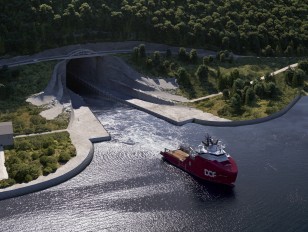
First ship tunnel to be constructed in Norway
Mar, 24, 2021 | NewsNorway plans for a pioneering construction project that will facilitate ship transportation. The pl...
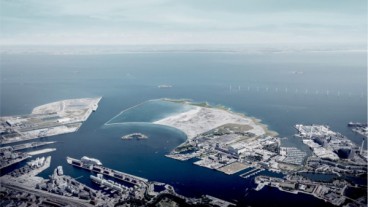
Denmark to build an artificial island in the port of Copenhagen
Jun, 04, 2021 | NewsThe Danish government plans to construct an artificial island in the port of Copenhagen, the capital...
World’s first artificial energy island to be constructed in the North Sea
Mar, 15, 2023 | NewsThe construction contract for the world’s first artificial energy island was recently awarded to a...

Revolutionary 3D-Printed Clay Reefs Enhance Biodiversity in the Maas River
Jul, 10, 2024 | NewsInnovative Solution for Erosion Control Rijkswaterstaat is implementing a groundbreaking solution...

Transcripts Reveal Technical Failures Before Baltimore Bridge Collapse
Jun, 04, 2025 | NewsFollowing the collapse of the Francis Scott Key Bridge in Baltimore on March 26, 2024, engineering...

Two Dead After Ship Strikes Iconic NYC Bridge
May, 17, 2025 | NewsA tragic maritime incident unfolded on May 17, 2025, when the Mexican Navy's tall training ship Cua...
Trending

Vertical gardens in Mexico City to combat pollution

Saudi Park Closed After 360 Big Pendulum Ride Crashes to Ground, 23 injured

Characteristics of Load Bearing Masonry Construction

Taipei 101’s impressive tuned mass damper

Dutch greenhouses have revolutionized modern farming

Federal court rules Biden’s offshore drilling ban unlawful


